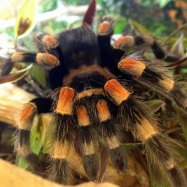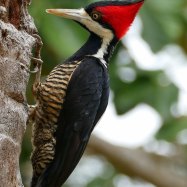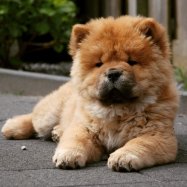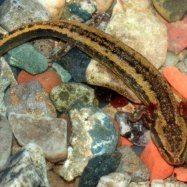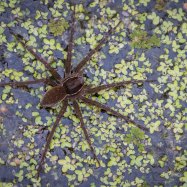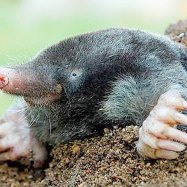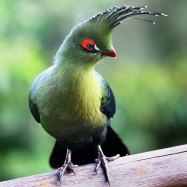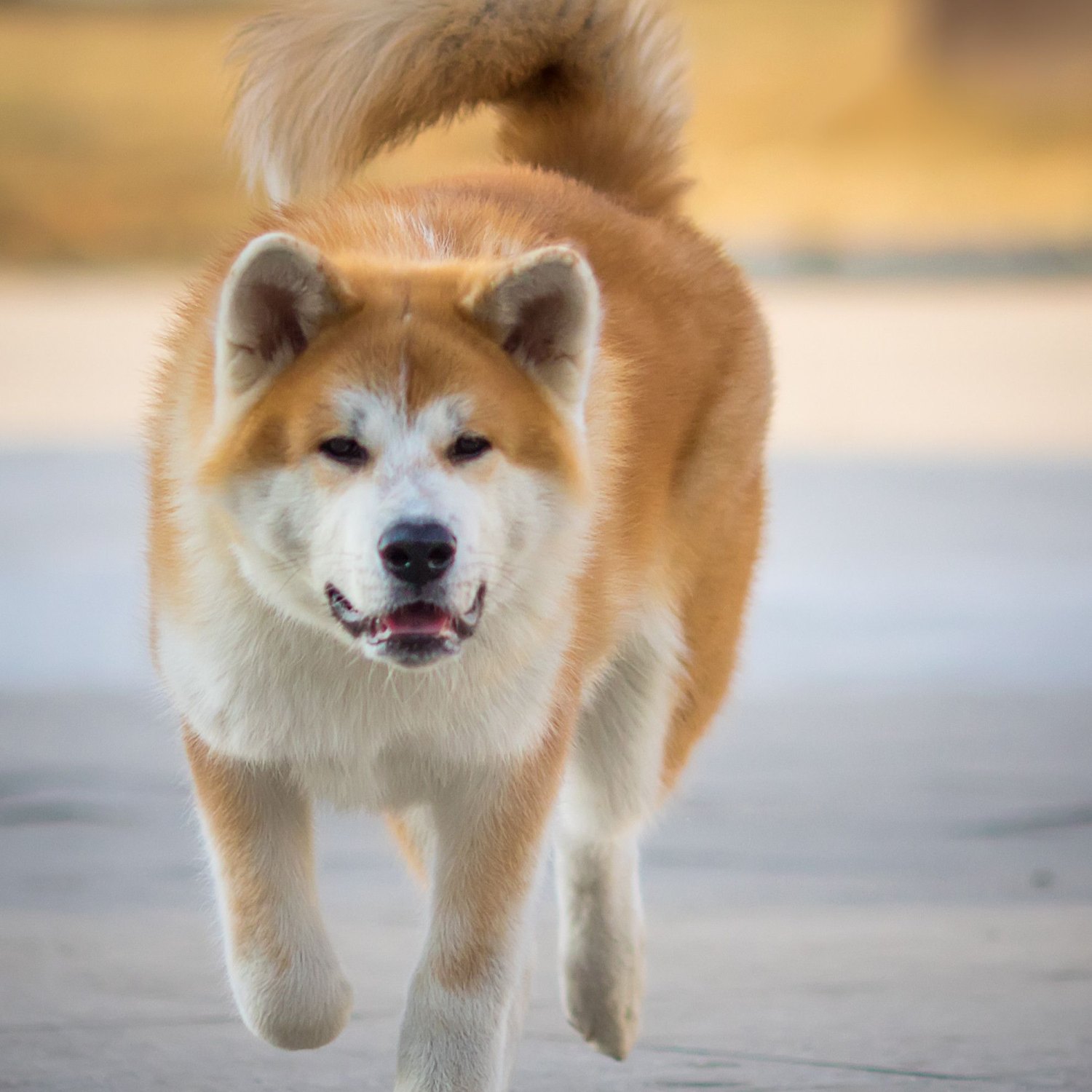
Akita
24-28 inches (61-71 cm)
The Akita is a majestic breed of dog known for its loyalty and courage. Originally from Asia, this medium to large-sized dog can reach lengths of 24-28 inches. Belonging to the Canidae family, the Akita is a popular choice for dog lovers around the world. Its impressive body shape and remarkable traits make it a beloved companion and a symbol of strength and resilience.
Animal Details Summary:
Common Name: Akita
Kingdom: Animalia
Habitat: Terrestrial
The Majestic Akita: The National Treasure of Japan
The Akita, also known as Akita Inu, is a magnificent and loyal dog breed originating from Japan. This powerful and intelligent animal has captured the hearts of dog lovers worldwide with its regal appearance and unwavering loyalty to its owners. In Japan, the Akita is considered a national treasure and has even been declared a natural monument. Let's take a closer look at this remarkable animal and the qualities that have made it one of the most beloved dog breeds in the world Akita.The Magnificent Canine
The scientific name for the Akita is Canis lupus familiaris, which translates to “domesticated wolf.” This species belongs to the kingdom Animalia, phylum Chordata, class Mammalia, and order Carnivora. It is a part of the Canidae family, which includes other well-known canine species such as wolves and foxes. Despite its powerful stature, the Akita is primarily a domesticated animal, bred as a companion and guard dog.Origin and History
As the name suggests, the Akita breed originated from the Akita Prefecture in Japan. There are several theories about the breed's exact origins, with some claiming that it is a descendant of the Matagi dog (a Japanese hunting dog), while others believe it descended from the Japanese fighting dog, Tosa. Nonetheless, evidence suggests that the Akita's ancestors were bred as working dogs for hunting and protecting farms from wild animals.The Cultural Significance of the Akita
In Japan, the Akita is a symbol of strength, courage, and loyalty. It has been a part of Japanese culture for centuries, and many stories and legends revolve around this prestigious breed Albatross. One of the most famous stories is the tale of Hachiko, an Akita who waited at a train station every day for nine years for his deceased owner to return. This heart-wrenching story has made the Akita a symbol of devotion and loyalty in Japan.The Akita is also considered a spiritual animal in Japanese culture, often depicted in ancient art and literature. In some regions of Japan, the Akita was even believed to be a guardian of good health and happiness.
Appearance and Physical Attributes
The Akita is a medium to large-sized dog, with a muscular build and a sturdy frame. On average, they stand at 24-28 inches (61-71 cm) tall and weigh between 70-130 pounds (32-60 kg). They have a broad, triangular head with small, almond-shaped eyes and small, erect ears. Their tail is thick and curls over their back, giving them a distinct appearance.One of the most striking features of the Akita is its dense, double coat. The outer coat is coarse and straight, while the undercoat is soft and dense, providing insulation and protection from harsh weather conditions. While white is the most common color for Akitas, they also come in various shades of brindle and pinto.
Akita's Habitat and Distribution
The Akita is a terrestrial animal, meaning it primarily lives on land. They are incredibly adaptable and can thrive in various environments, from cold mountainous regions to hot and humid areas. However, their natural habitat is the mountainous regions of Japan, where they were bred for hunting and guarding purposes.Although the Akita is a globally recognized breed, its distribution is mainly limited to Japan. In fact, the Japanese government has restricted the export of Akitas to protect the breed's integrity and their cultural significance.
Diet and Feeding Habits
As an ancient carnivorous animal, the Akita has a diet centered around meat. They require a high-protein diet to maintain their muscular build and active lifestyle. A balanced diet for an Akita includes high-quality dog food, supplemented with meat and vegetables. It is essential to note that Akitas are prone to obesity, so it is crucial to monitor their food intake and provide regular exercise.Personality and Temperament
Akitas are known for their courage, intelligence, and loyalty. They are fiercely protective of their owners and will not hesitate to defend their loved ones from danger. This protective nature is what makes them exceptional guard dogs.While they may appear stoic and intimidating, Akitas are deeply affectionate and loyal to their owners. They form strong bonds with their families and thrive when given love and affection. However, they can be reserved and cautious with strangers, making early socialization crucial for these dogs.
Training and Exercise Needs
Akitas are intelligent animals, eager to please their owners. Training and socialization should begin at an early age to ensure they grow into well-behaved and well-adjusted dogs. However, Akitas can be stubborn and strong-willed, so a firm and consistent approach is necessary. Positive reinforcement techniques, such as treats and praise, work best for training Akitas.As a breed originally bred for hunting and guarding, Akitas have high energy levels and require daily exercise. Regular walks, playtime, and mental stimulation are crucial for keeping them happy and healthy.
Common Health Concerns
Like any other breed, Akitas are prone to certain health issues. Some of the common health concerns for Akitas include hip and elbow dysplasia, eye problems, bloat, and immune-mediated diseases. Responsible breeders perform health screenings and genetic testing to reduce the risk of these health concerns in their offspring.The Akita as a Family Pet
The Akita's majestic appearance and loyal nature make it a popular choice for a family pet. While they may not be the best fit for novice dog owners, Akitas thrive in a loving and committed household. They get along well with children when socialized properly and make excellent guard dogs, always ready to protect their loved ones from harm.However, it is essential to note that Akitas can be territorial and may not get along with other pets. Early socialization and proper training can help mitigate any potential issues.
Preserving the Akita Breed
The Akita's unique history and cultural significance have made it a beloved breed globally. However, irresponsible breeding practices and puppy mills have put the breed's integrity at risk. It is essential to only obtain an Akita from a reputable breeder and consider adoption if possible.The Japanese government has also implemented strict measures to preserve and protect the breed in its native country. Breeding regulations and export restrictions have helped maintain the Akita's genetic diversity and ensure its continued existence.
Conclusion
In conclusion, the Akita is a remarkable and unique breed, deeply ingrained in Japanese culture and society. Its courage, loyalty, and regal appearance have made it a beloved companion around the world. Through responsible ownership and preservation efforts, we can continue to celebrate and appreciate the Akita as a national treasure of Japan and a truly magnificent animal.

Akita
Animal Details Akita - Scientific Name: Canis lupus familiaris
- Category: Animals A
- Scientific Name: Canis lupus familiaris
- Common Name: Akita
- Kingdom: Animalia
- Phylum: Chordata
- Class: Mammalia
- Order: Carnivora
- Family: Canidae
- Habitat: Terrestrial
- Feeding Method: Carnivorous
- Geographical Distribution: Japan
- Country of Origin: Japan
- Location: Asia
- Animal Coloration: Various shades of white, brindle, or pinto
- Body Shape: Medium to large
- Length: 24-28 inches (61-71 cm)
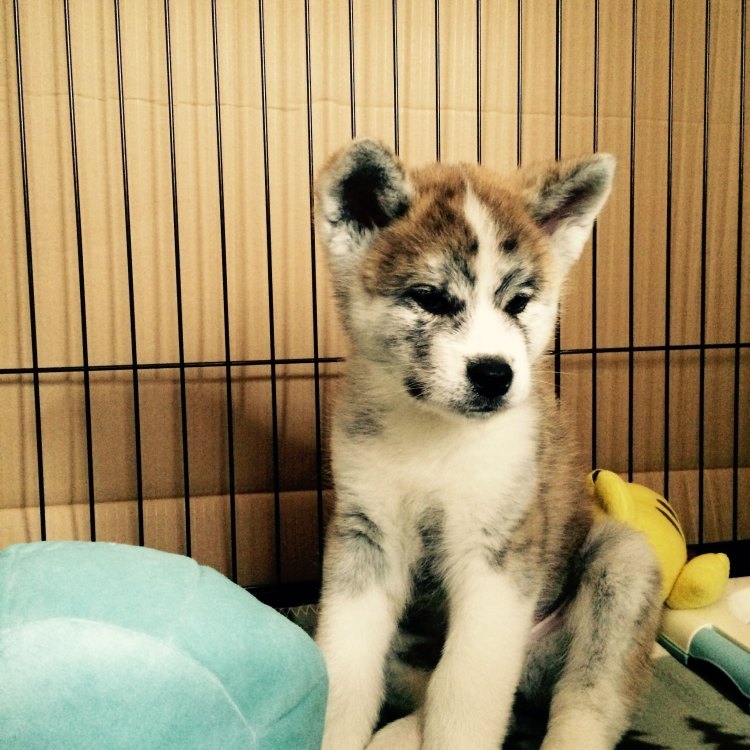
Akita
- Adult Size: Large
- Average Lifespan: 10-15 years
- Reproduction: Sexual
- Reproductive Behavior: Seasonal breeding
- Sound or Call: Varies
- Migration Pattern: Non-migratory
- Social Groups: Can be solitary or live in packs
- Behavior: Loyal, protective, independent
- Threats: None
- Conservation Status: Not listed
- Impact on Ecosystem: No significant impact
- Human Use: Companion dog, therapy dog, guard dog
- Distinctive Features: Large stature, deep chest, curled tail, bear-like head
- Interesting Facts: Akita is a breed of dog that originated in Japan and is known for its fierce loyalty and protective nature. They were originally bred for hunting large game like bears, boars, and deer. Akitas are famous for their strong and independent personalities, as well as their bravery and loyalty to their families. They have a thick double coat that keeps them warm in cold weather. Akitas are also used as therapy dogs due to their calm and gentle nature.
- Predator: None
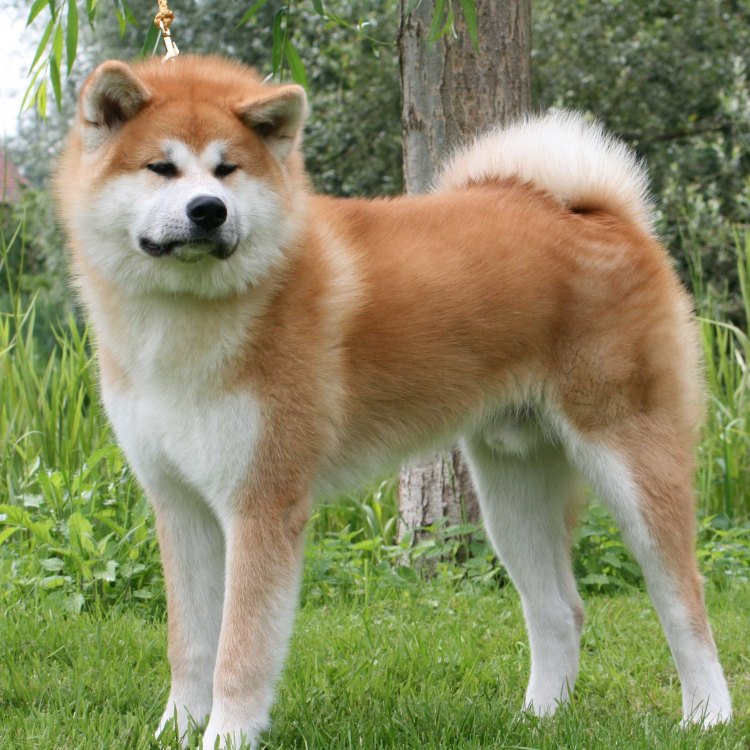
Canis lupus familiaris
The Fascinating World of Akita Dogs: Fiercely Loyal Companions with a Rich Cultural History
When thinking of Japan, many things may come to mind - sushi, cherry blossoms, samurai, and anime. But one quintessential Japanese aspect that often goes overlooked is the Akita dog. The Akita is a magnificent and powerful breed of dog that has been revered in Japanese culture for hundreds of years, and it's no surprise why.Adult Size: Large
Average Lifespan: 10-15 years
Reproduction: Sexual
Reproductive Behavior: Seasonal breeding
Sound or Call: Varies
Migration Pattern: Non-migratory
Social Groups: Can be solitary or live in packs
Behavior: Loyal, protective, independent
Akita dogs are known for their large stature, with adult males reaching up to 28 inches in height and weighing between 90-130 pounds PeaceOfAnimals.Com. Their deep chest and bear-like head give them an imposing presence, while their soft and fluffy coats provide a striking contrast. Akitas have a thick double coat that allows them to thrive in cold climates, making them well-suited for Japan's harsh winter weather.
But it's not just their physical appearance that makes Akitas stand out. These dogs have a reputation for being fiercely loyal and protective of their families. They are known to form strong bonds with their owners and will do anything to keep them safe. This trait is deeply ingrained in the breed, as Akitas were originally bred in Japan's rugged mountain regions to hunt large game such as bears, boars, and deer.
Threats: None
Conservation Status: Not listed
Impact on Ecosystem: No significant impact
Predator: None
One of the most interesting facts about Akitas is that they have no natural predators. This is partly due to their large size and powerful nature but also a reflection of their unique position in Japanese culture. In Japan, Akitas are considered a national treasure, and the breed is heavily protected Atlas Beetle. This status has helped preserve the breed and prevent it from being hunted or harmed by other animals.
Interestingly, the conservation status of Akitas is not listed, which means that they are not currently considered an endangered species. However, this does not mean that Akitas are not at risk. Like any other breed, they can be susceptible to genetic diseases and health issues. It's crucial for owners to stay informed and vigilant about their Akita's health to ensure they live long, healthy lives.
Human Use: Companion dog, therapy dog, guard dog
Akitas have proved themselves to be incredibly versatile and intelligent animals, which is why they have been used for various purposes throughout history. In addition to being fierce hunters, Akitas have also been trained to serve as therapy dogs due to their calm and gentle nature. They are known to have a calming presence, making them ideal for providing emotional support and comfort to those in need.
It's no wonder that Akitas have also become popular as companion dogs. Their loyalty, protective instincts, and independent personalities make them great family pets. Akitas are not afraid to assert themselves and make their presence known, but they also have a playful and affectionate side, making them a joy to have around.
Distinctive Features: Large stature, deep chest, curled tail, bear-like head
Akitas have several distinctive physical features that set them apart from other dogs. Their large stature and deep chest give them a strong and sturdy appearance, while their curled tail adds a touch of elegance. Their bear-like head is perhaps their most striking feature, with a broad and powerful muzzle and soulful eyes that can melt anyone's heart.
But beyond their physical traits, Akitas have unique personalities that make them truly one of a kind. They are renowned for their intelligence, loyalty, and independence. Akitas tend to think and act for themselves and may not always follow commands or listen to their owners, making training a challenge. However, with patient and consistent training, Akitas can prove to be well-behaved and obedient companions.
Interesting Facts: Akita is a breed of dog that originated in Japan and is known for its fierce loyalty and protective nature.
Aside from their physical and behavioral characteristics, Akitas have a rich cultural history that adds to their charm. They are believed to be one of the oldest breeds of dogs in Japan and date back to the 17th century. Originally bred as hunting dogs, Akitas were also used in Japan as fighting dogs, a practice that is now banned.
In Japan, Akitas are also associated with the legend of Hachiko, a loyal Akita who waited for his deceased owner at the train station for almost ten years. This touching story has made Akitas a symbol of loyalty and devotion in Japanese culture.
Another fascinating fact about Akitas is their unique seasonal breeding behavior. Unlike most dog breeds that can reproduce year-round, Akitas only have a specific breeding season in the winter. This behavior is believed to have developed as a survival mechanism in the harsh winter conditions of Japan.
In recent years, Akitas have gained popularity around the world, with many celebrities and famous figures owning and promoting the breed. They have also become popular in the world of dog shows, with fans admiring their stunning appearance and impressive characteristics.
In conclusion, Akitas are a remarkable breed of dog with a rich cultural history and fascinating features. From their large stature and powerful nature to their loyalty and independent personalities, Akitas are truly one of a kind. Whether as a companion dog, therapy dog, or guard dog, Akitas have proven to be versatile and beloved animals. So the next time you see an Akita strolling down the street, take a moment to appreciate the cultural significance and unique traits of this magnificent breed.
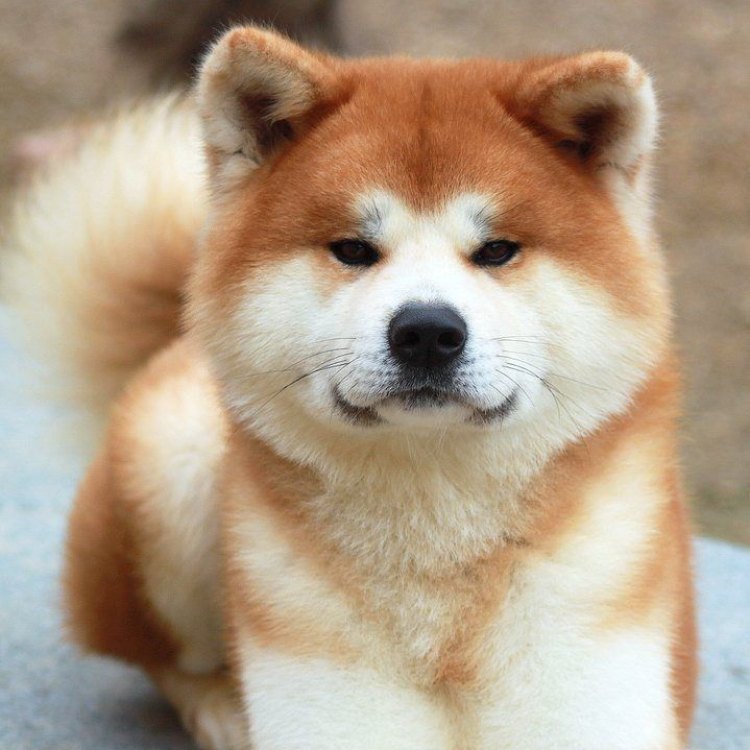
The Majestic Akita: The National Treasure of Japan
Disclaimer: The content provided is for informational purposes only. We cannot guarantee the accuracy of the information on this page 100%. All information provided here may change without prior notice.

